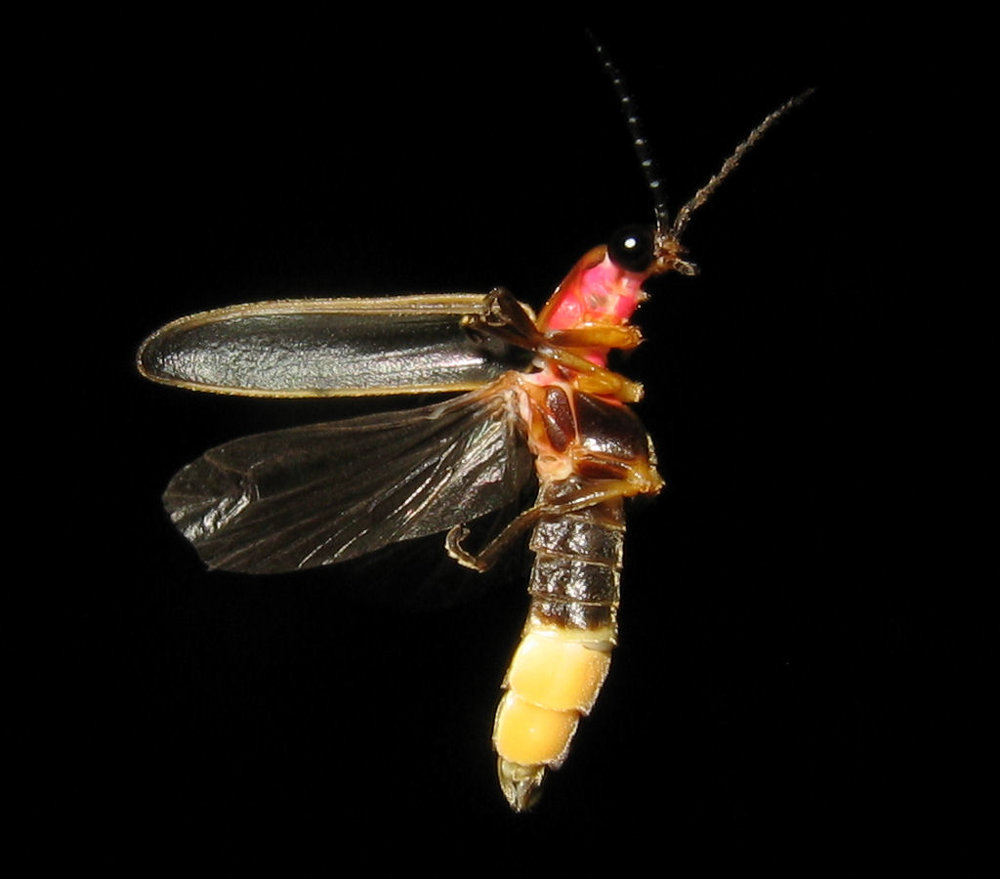Summer isn't over until those beautiful fireflies pay a visit
June 21 is astronomically the official beginning of summer. For many people, however, it begins simply with longer daylight hours.
For students, it happens with the end of the school year. For me, it arrives with the flickering of the fireflies as dusk approaches.
Just like capturing grasshoppers, this is an exercise in hand-eye coordination with one additional wrinkle. Catching one barehanded — or with nets, as recommended by Massachusetts Audubon — has the added dilemma of spotting a tiny, dark flying object in failing light. The activity is fairly easy in early evening, but becomes increasingly challenging as night comes on.
Although all the fireflies I have ever caught seemed to resemble each other, apparently there is significant diversity. Worldwide there are 2,000 described species, all in the Lampyridae family.
In North America, there are 150 species in 16 genera, although the three main groups are Photinus (state insect of Tennessee with a yellow-green flash), Pyractomena (amber flash), and Photuris (whose flash is greener and brighter than Photinus).
Not only are there color differences in the flashes between the species, but the number, duration and time between flashes also is distinctive. There are recognizable differences in appearance between these genera, but I am guessing that the fireflies that I see are Photinus.
Given the number of firefly species, it is not surprising to find that some are diurnal — active during daylight, inactive at night — and do not have flashing signals. This summer I noticed many fireflies during daylight hours, and none seemed to be flashing. I also noticed that there seems to be many more this year than last, and that they appeared earlier in the season.
The weather deeply influences their appearance. Generally, they will emerge between late May and late June, but unseasonal warm and humid weather will hasten their emergence. A wet spring also is helpful since the wet soil brings out those other animals that the larvae feed on — slugs, snails and pill bugs.
Despite the pleasure we receive in watching these visual displays, the firefly has a purpose of its own, searching for a mate. It is the males that fly around emitting their signals waiting for a responding flash from an interested female that is sitting quietly on a nearby bush or grass.
A captured male can be differentiated from a female by turning it over and observing the light organ at the end of the abdomen. Male lanterns are larger and will cover the last two abdominal segments entirely, while female lanterns are smaller and will only partially cover one or two segments.
But all is not perfect between flashing males and females. Flashing patterns are species specific. However, the female Photuris can mimic the flashing pattern of the female Photinus.
The unfortunate Photinus male that shows up becomes dinner. Not surprisingly, these are known as “femme fatale” fireflies.
After mating, the female lays her eggs on or just below the surface of the soil. The eggs hatch in three to four weeks, and the larvae — which appear armor-plated — will feed until the end of summer. They will hibernate as larvae either underground or on — or under — tree bark until spring.
Feeding will then resume on other insects, snails and worms.
While larvae usually pupate their first spring, some remain in the larval stage until the second spring. Pupation (cocoon formation and metamorphosis), when it occurs, lasts between one and two-and-a-half weeks, and then the adult will emerge.
Their food will vary at that time, some species eating insects, others eating plant pollen or nectar, while the Photinus doesn’t eat at all. This presupposes that its lifetime after emerging from the cocoon is short and devoted strictly to reproduction.
In addition to the cannibalistic propensities of the Photuris female, fireflies have another unpleasant capability. Some species contain steroid compounds called lucibufagins which are toxic to many animals. Since many insect predators have some experience with unpalatable prey, it acts as a defense mechanism.
This is accomplished by “reflex bleeding.” When a firefly that has lucibufagins is attacked, it secretes drops of blood contaminated with this compound. In this fashion it does not need to die and give up its life for others of its kind in order to “teach” the predator that it is an inappropriate prey.
However, the Photuris doesn’t produce its own lucibufagins but can acquire it by eating the fireflies that do.
A friend recently told me that she has noticed a unique smell on her hands after catching a firefly. I will have to check this out!
The lucibufagins of fireflies are related to the toxin bufadienolides found on the skin of poisonous frogs the frog genus Bufo. Intriguingly, some species of the succulent kalanchoe family also synthesize bufadienolides.
Maybe next time we will get to the light mechanism of fireflies!
Have a thought or comment for Sura Jeselsohn? Email her at greenscenesura@gmail.com.






